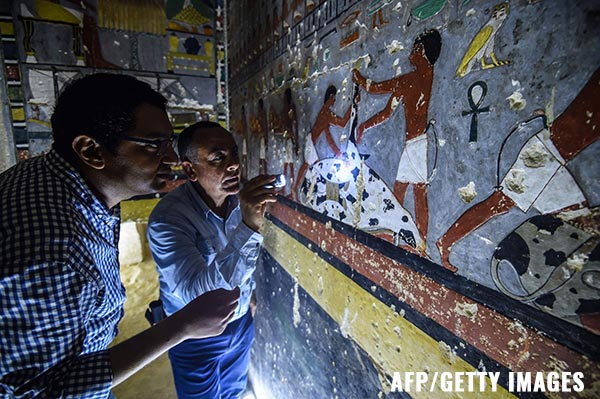
- A 6,000-year-old rock carving near Aswan depicts an elite figure (possibly a proto-pharaoh) on a ceremonial boat – suggesting Egypt's unification under its first kings was achieved through conquest, not peaceful diplomacy.
- The figure's false beard – later a pharaonic symbol – and the boat's north-facing direction (against the Nile's current) imply early rulers projected divine and natural dominance.
- The carving challenges romanticized views of ancient Egypt, revealing a brutal shift from tribal conflicts to centralized rule, with art serving as propaganda to assert control.
- The discovery underscores that lasting civilizations like Egypt's 3,000-year dynasty were built on decisive, often forceful leadership – principles conservatives argue remain relevant today.
- The carving highlights how ancient elites used art and symbolism to legitimize authority, a reminder that societal order historically requires strength and vision.
The discovery: A king before kings, and a bloody path to unity
The boat motif is no accident. In ancient Egypt, vessels symbolized both practical and divine authority – kings were believed to travel with the gods. This carving's north-facing direction, against the Nile's current, implies a ruler's command over nature itself. The five pullers may represent subdued regions, their labor a tribute to the emerging state. In an era where Western institutions waver under moral relativism, Egypt's rise is a lesson in cultural endurance. Its unification under Narmer birthed a 3,000-year civilization not through weakness, but through decisive leadership. The carving's craftsmanship suggests it was state-sponsored, a calculated display of authority. As archaeologists piece together Egypt's origins, one truth emerges: The foundations of power are timeless. "Rock compositions became a tool for the authorities to communicate, mark the landscape and assert their power," Vanhulle concludes. The Aswan carving is more than art. It is a relic of the moment might made right, when warlords became kings and chaos gave way to permanence. For those who value tradition, this is a warning: Societies that forget the hard lessons of history risk repeating its collapses. Egypt's legacy endures because its founders understood that unity demands strength – a principle as true today as it was six millennia ago. Visit Discoveries.news for more similar stories. Watch this video about the 10 secrets of ancient Egypt. This video is from the AncientCivilizations channel on Brighteon.com.More related stories:
Analysis of mummified kids in Ancient Egypt reveals a third of them suffered from ANEMIA. Mother Nature may have contributed to the rise of the Roman Empire: Volcanic eruptions, drought found to coincide with political events in ancient Egypt. Location of “Great Revolt” mentioned in Rosetta Stone discovered in Egypt. Sources include: DailyMail.co.uk Cambridge.org GBNnews.com Brighteon.comScreen time linked to early heart damage in kids, alarming new study warns
By Cassie B. // Share
Humulene: The ancient terpene with modern health benefits
By Ava Grace // Share
Groundbreaking study uncovers nutrient gaps in Alzheimer’s brains
By Willow Tohi // Share
Curcumin effectively reduces pain in osteoarthritis patients
By News Editors // Share
An invisible assault: How everyday heavy metals sabotage brain health
By willowt // Share
Pentagon warns of China's rapidly expanding nuclear arsenal
By kevinhughes // Share
FCC grounds new Chinese drones in sweeping security move
By avagrace // Share
The methylation switch: Scientists identify diet that can turn back the cellular clock
By jacobthomas // Share
Renaissance or Ruin: A wake-up call for cultural revival and self-sufficiency
By kevinhughes // Share
Weight loss in midlife may trigger brain inflammation, study finds
By avagrace // Share











